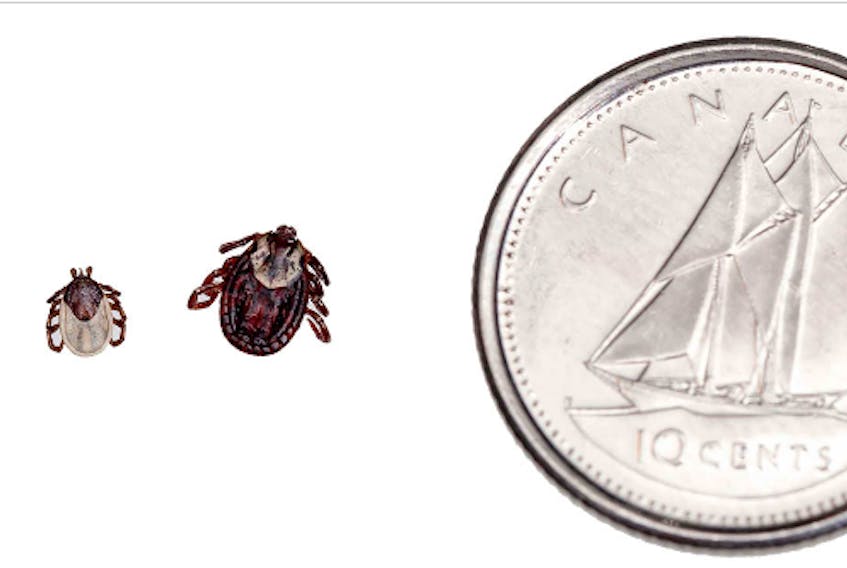The number of Lyme disease cases in the province has slowly escalated over the past three years.
In 2014, there were 115 cases reported. In 2015, the number rose to 254. Last year 326 cases of Lyme disease were recorded in Nova Scotia.
That’s almost half the number of cases – 701 - recorded from 2002 to 2015.
Lynda Earle, medical officer of health for South Shore, South West, Annapolis Valley, says there are several explanations for the rise in Lyme disease cases.

“In Nova Scotia, with our warmer and warming weather, ticks can be active anytime there are a few days where the temperature is over four degrees,” she said.
Residents in southwestern Nova Scotia, the warmest area in the province, can attest to the reality of now having to cope with ticks 12 months of the year.
Earle adds that with more information about Lyme disease available, more people are seeking care.
“Because of that awareness the number of cases might go up,” she said.
She sees that as a positive development, as people are hopefully becoming more conscious of protecting themselves against ticks.
The risk for Lyme disease varies for different areas in the province. Shelburne and Yarmouth are higher risk.
“Understanding where in the province you might be more at risk is helpful, but if you’re going into tick habitat like those grassy trails where there is a lot of forest or leaf litter, those places where ticks like to be, you need to think about it and make sure you do a tick check on a regular basis after being in that habitat,” said Earle.
The development of a vaccine for Lyme disease would be a welcome solution for health-care providers and the general population, but that likely won’t happen for a while, she says.
Vaccine development is a complicated process that takes 10-15 years in general.
Thankfully, like all infections, Lyme disease is treatable with antibiotics. The course of medicine is dependent on what the situation is.
“The key piece (to remember) is that it’s a condition that people can take preventative measures against,” said Earle.

More about ticks
For more information on:
- how to reduce your chances of tick bites
- how to check yourself for ticks
- how to remove a tick safely
- how to dispose of a tick
- how to submit a tick for identificationand signs and symptoms of Lyme disease, click here.









